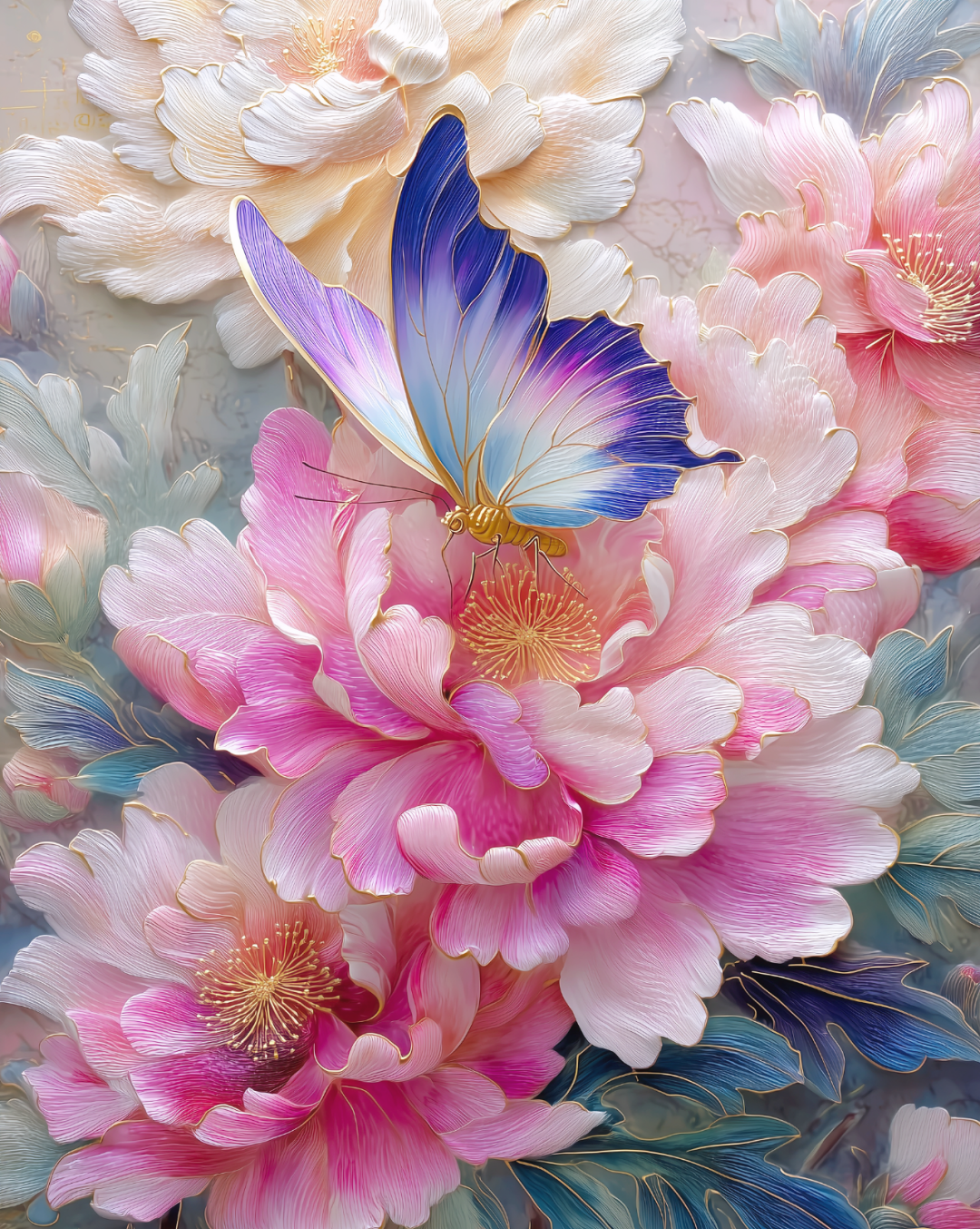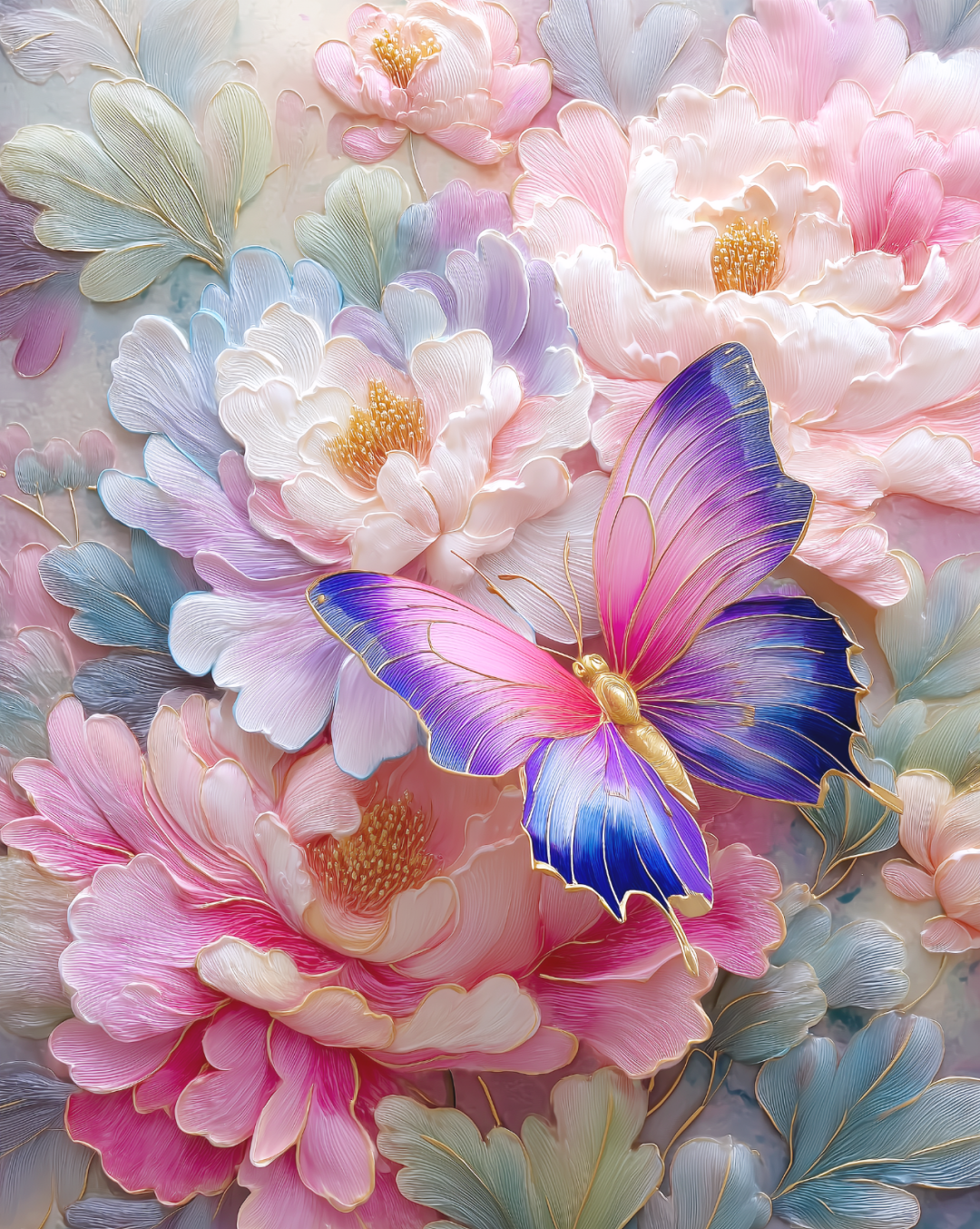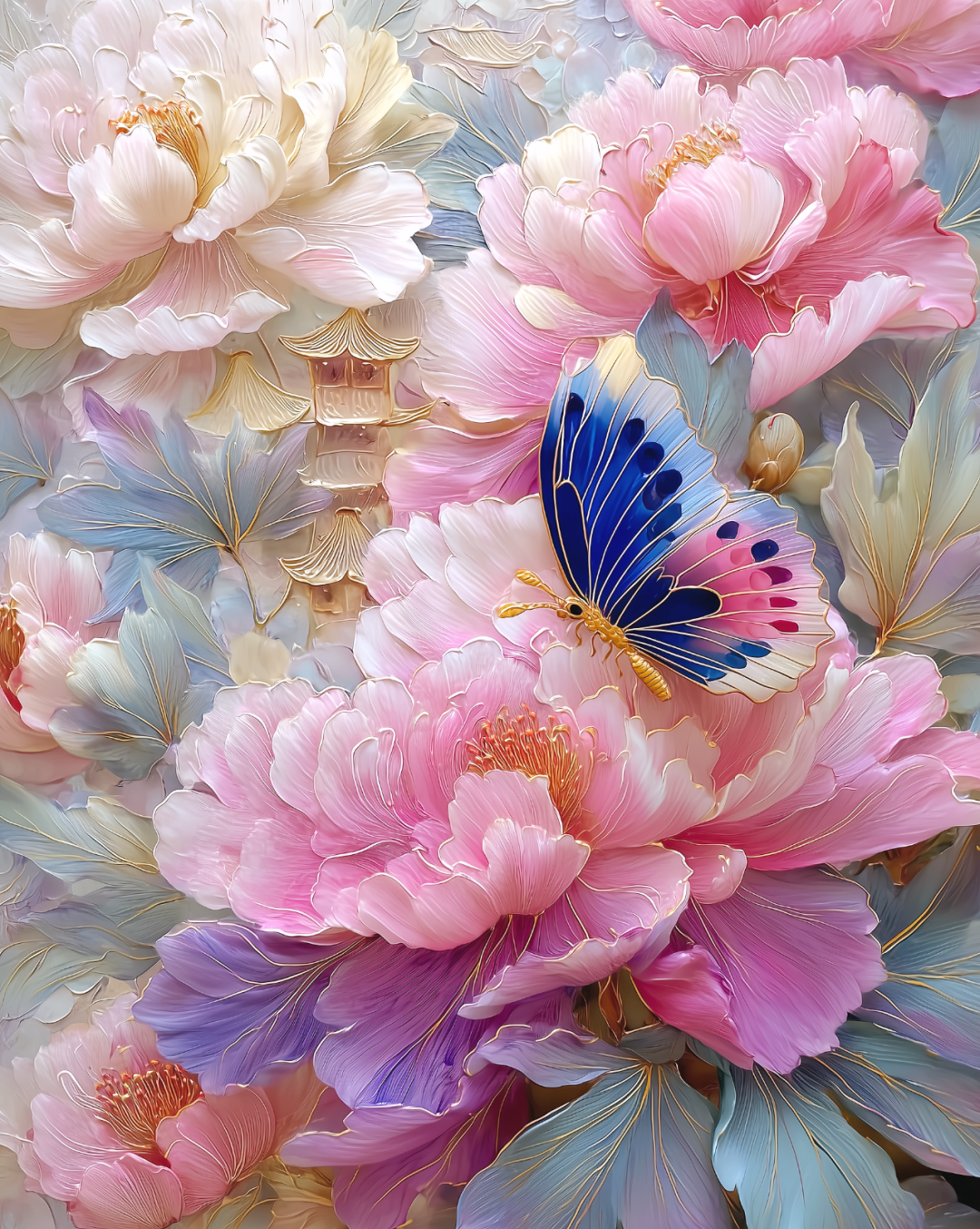A Thousand Year Dream Blooming from the Pen Tip
- 2025-04-21
- AI IMAGES
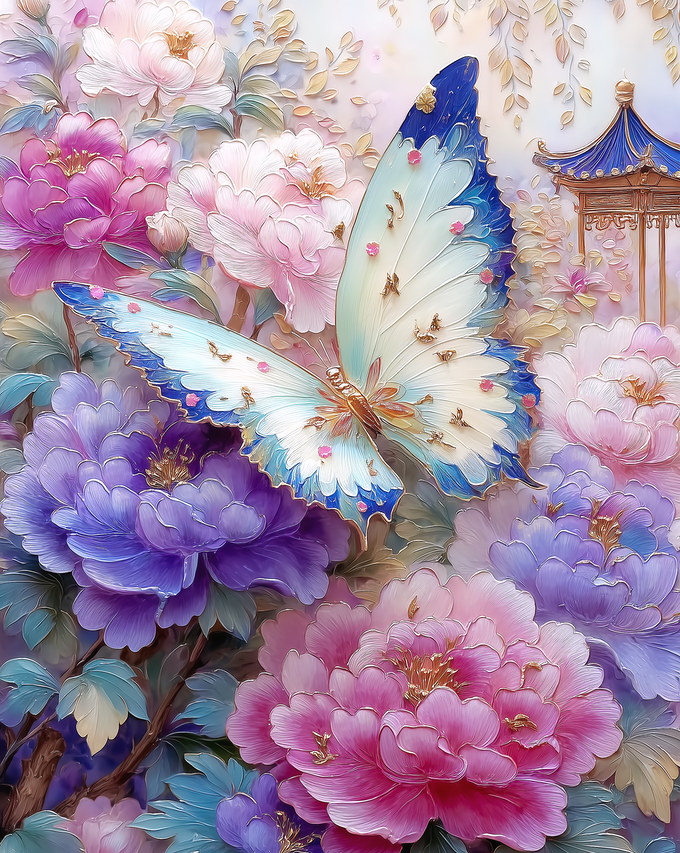
In the world where rice paper and ink wash intertwine, there is a world cherished by time - the "Peony Pavilion". When the brush lightly outlines, the grace of peonies and the ancient charm of flower pavilions slowly flow on the paper, like a silent poem, a three-dimensional painting, narrating the elegance and romance of a thousand years. Every illustration is a door to a dream, leading us through time and space, immersed in this poetic realm infused with peonies and flower pavilions.
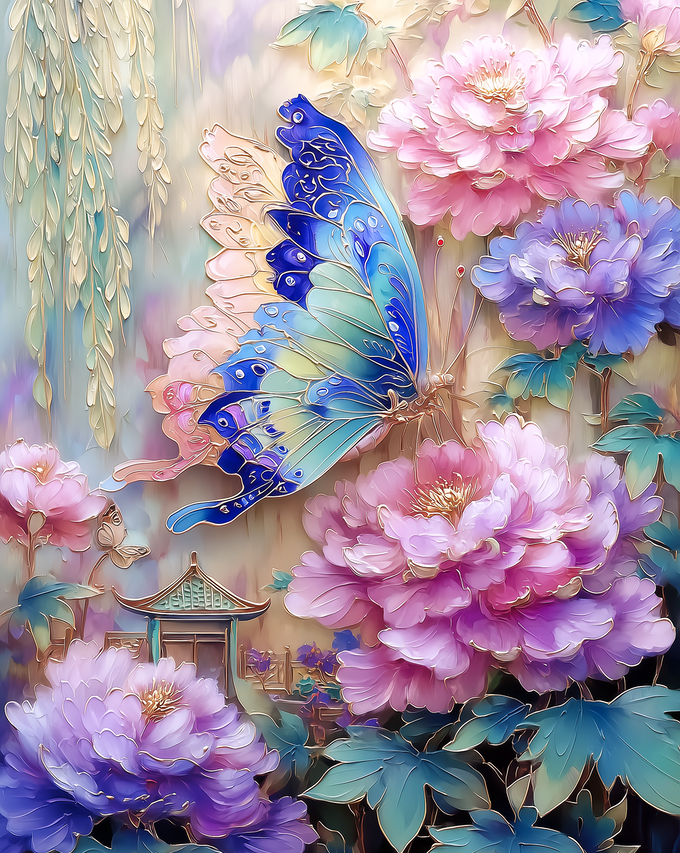
Unfolding the painting, the first thing that catches the eye is the quaint and elegant flower pavilion. The roof of the pavilion has upturned eaves and corners, like a bird spreading its wings to fly, light and agile, outlining a beautiful arc in the sky. The tiles are layered, and the delicate brushstrokes present the texture of each tile clearly, as if one can touch the mottled marks left by time. The pavilion pillars are thick and upright, and the wood grain on the surface complements the carved patterns, showcasing the exquisite craftsmanship of the craftsmen. The color of vermilion has been polished by time, shedding some of its brilliance and adding a touch of calmness, like an old man who has read through the vicissitudes of life, quietly telling stories of the past.
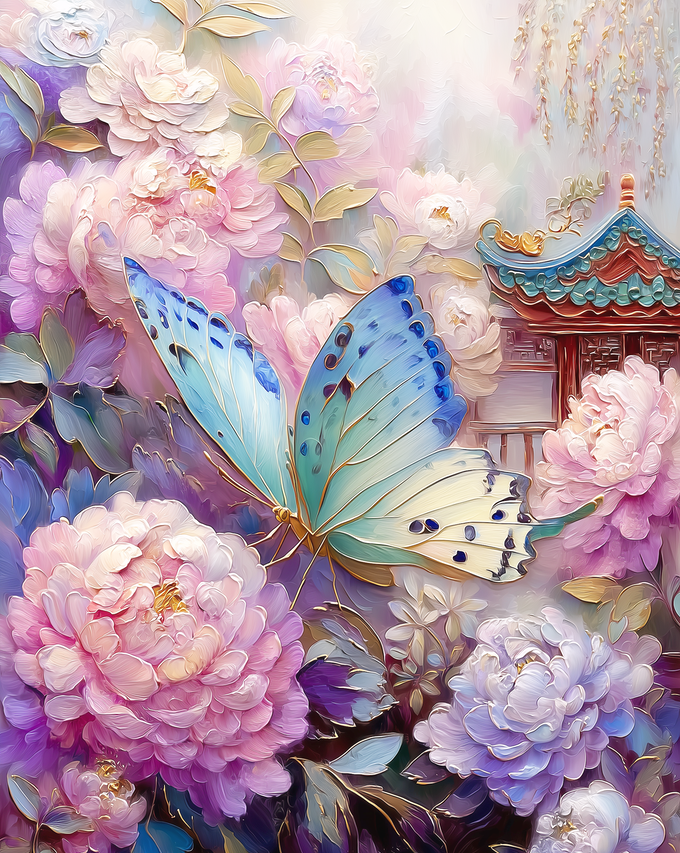
The fence of the flower pavilion is exquisitely crafted, with exquisite carved patterns. In the hollowed out patterns, flowers, birds, fish, and insects come to life vividly. The petals of peonies, the wings of butterflies, and the veins of vines are intricately depicted in every detail. Through the fence, one can vaguely see the stone tables and benches inside the pavilion. The round tabletop and antique bench surface seem to be waiting for literati and scholars to come and play chess, drink tea, recite poetry, and paint. The sunlight shines through the gaps in the flower pavilion, creating mottled light and shadow on the ground. Amidst the interplay of light and shadow, one can see the various elegant events that once occurred here, and hear the melodious music of the qin and the hearty laughter.
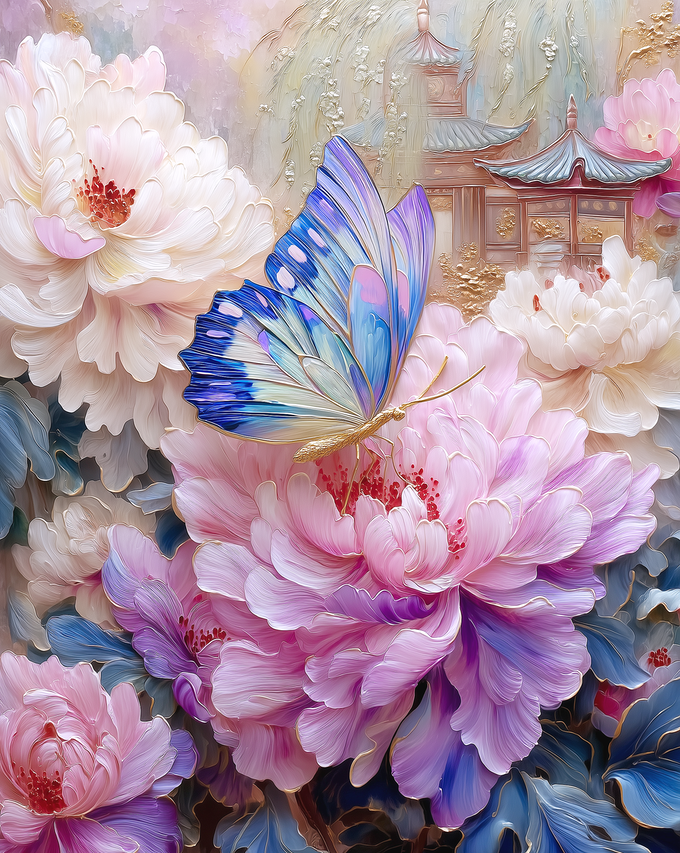
Around the flower pavilion, winding paths lead to secluded places. The winding stone road is paved with stones of different sizes, with tender green moss growing in the gaps, adding a touch of vitality and poetry to the road. The green bamboo on the roadside sways in the wind, and the bamboo leaves rustle, echoing the sound of the distant gurgling stream, forming a beautiful natural melody. Strolling along this path, it feels like being in a secluded paradise, far away from the hustle and bustle of the world.
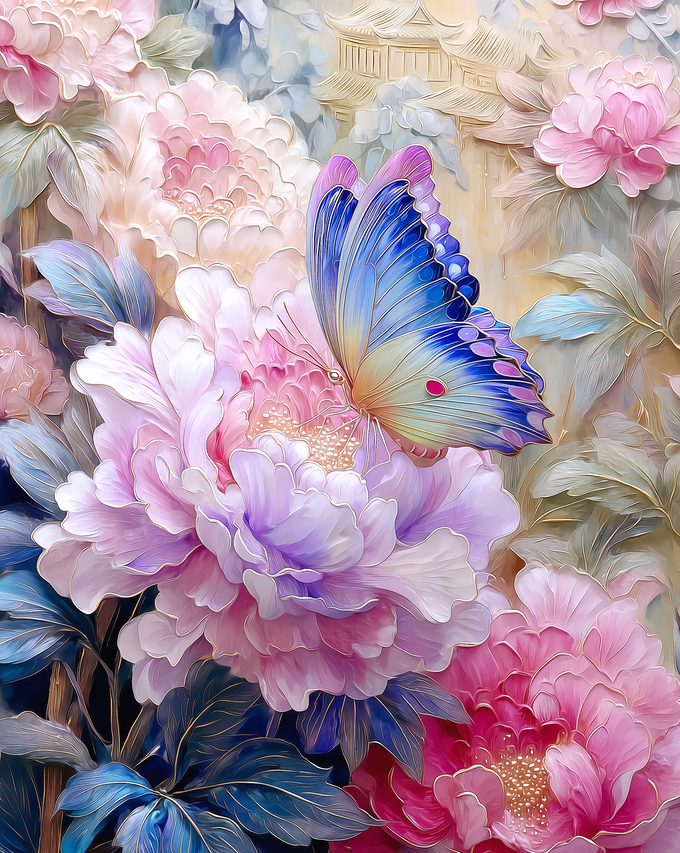
Around the flower pavilion, peonies bloom with an absolute protagonist posture. Each peony is like a meticulously crafted artwork by a painter, with petals layered like a gorgeous skirt. The bright red peony is passionate and unrestrained, like a burning flame, dyeing the entire picture with fiery colors. The rich red seems to overflow from the painting, highlighting the magnificence and grandeur of the peony.
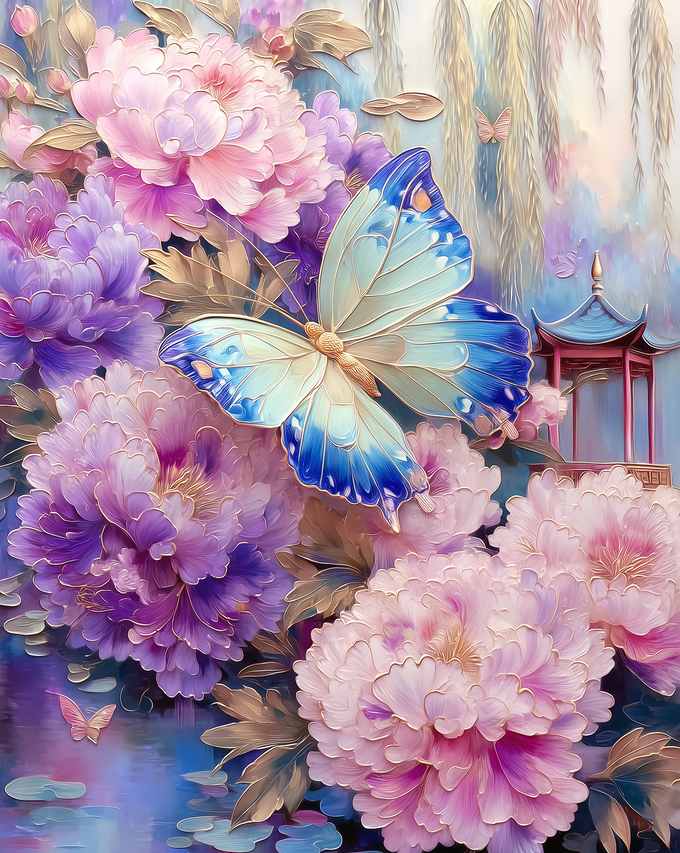
The pink peony is gentle and graceful, like the shy blush of a young girl. The edges of the petals are slightly curled, with a hint of playfulness and liveliness, swaying gently in the breeze, emitting a delicate fragrance; The white peony is pure and elegant, like the first snow in winter. Its petals are transparent like jade, shimmering with a soft light under the sunshine, like a fairy descending to the world without any dust.
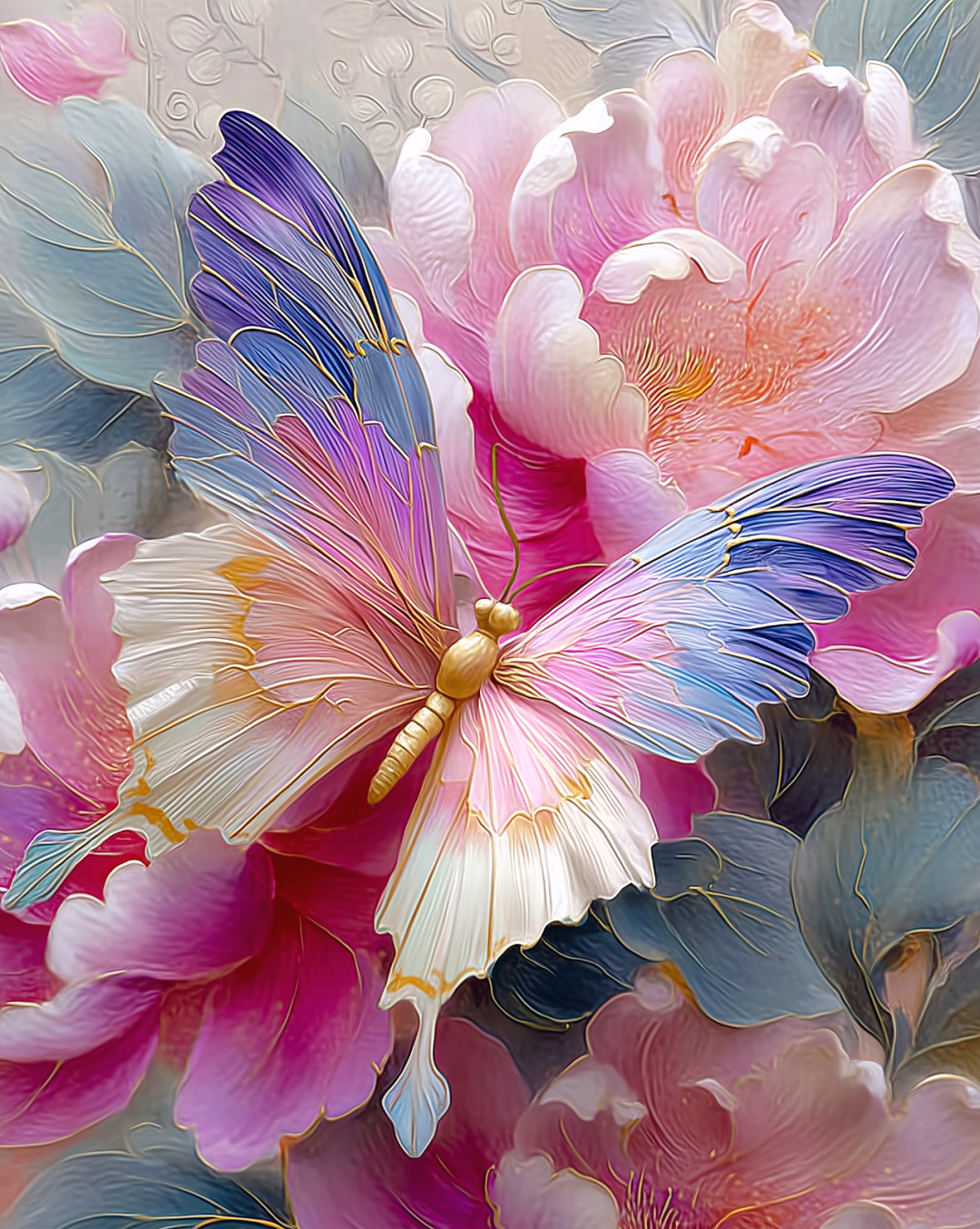
Peonies and flower pavilions have a profound historical heritage in Chinese culture. Peony, known as the "king of flowers", has been deeply loved by people since the Tang Dynasty, symbolizing wealth, prosperity, and good fortune. In ancient times, peonies were often planted in royal gardens, mansions of high-ranking officials, and courtyards of literati and scholars, becoming a symbol of identity and status. Many poems, songs, and paintings are themed around peonies, praising their beauty and luxury. Liu Yuxi's poem 'Only peonies are the true national color, and when they bloom, they move the capital city' vividly showcases the charm of peonies.

Huating, as an important component of traditional Chinese architecture, carries rich cultural connotations. It is not only a place for people to rest and enjoy the scenery, but also a place for literati and scholars to recite poetry and exchange ideas. In ancient Chinese gardens, the design and layout of flower pavilions were highly emphasized, often combined with mountains, waters, flowers, and plants to create a serene and elegant atmosphere. From private gardens in Jiangnan to royal gardens in the north, flower pavilions have become an indispensable part of gardens with their unique charm. It has witnessed countless historical changes and carried people's yearning and pursuit for a better life.
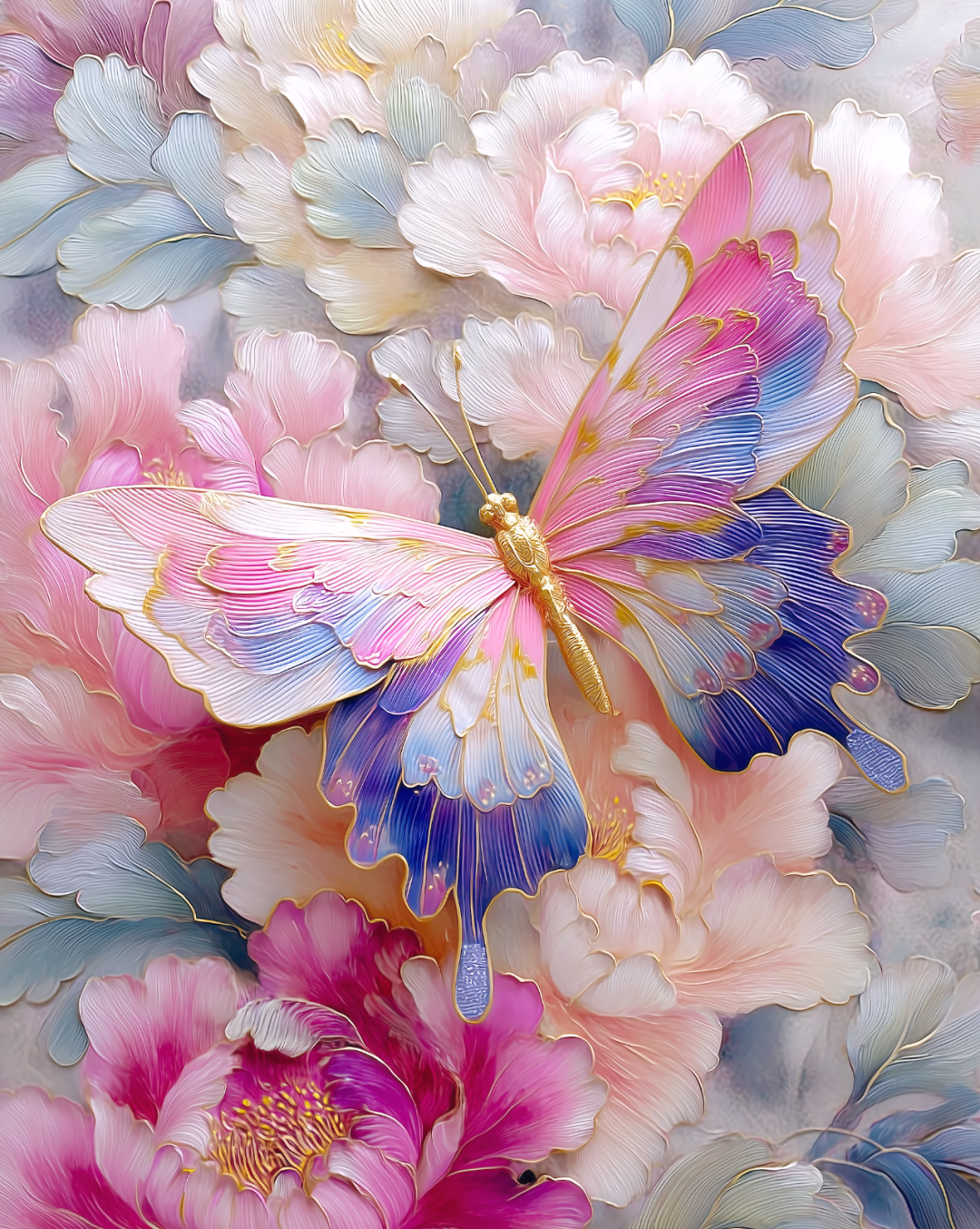
The "Peony Pavilion" series of illustrations combines the elements of peonies and flower pavilions, which are highly characteristic of Chinese culture. It not only inherits and promotes traditional culture, but also reinterprets classical aesthetics. Through the use of brushes, painters combine millennium old cultural heritage with modern artistic styles, allowing ancient culture to shine with new brilliance in the new era.
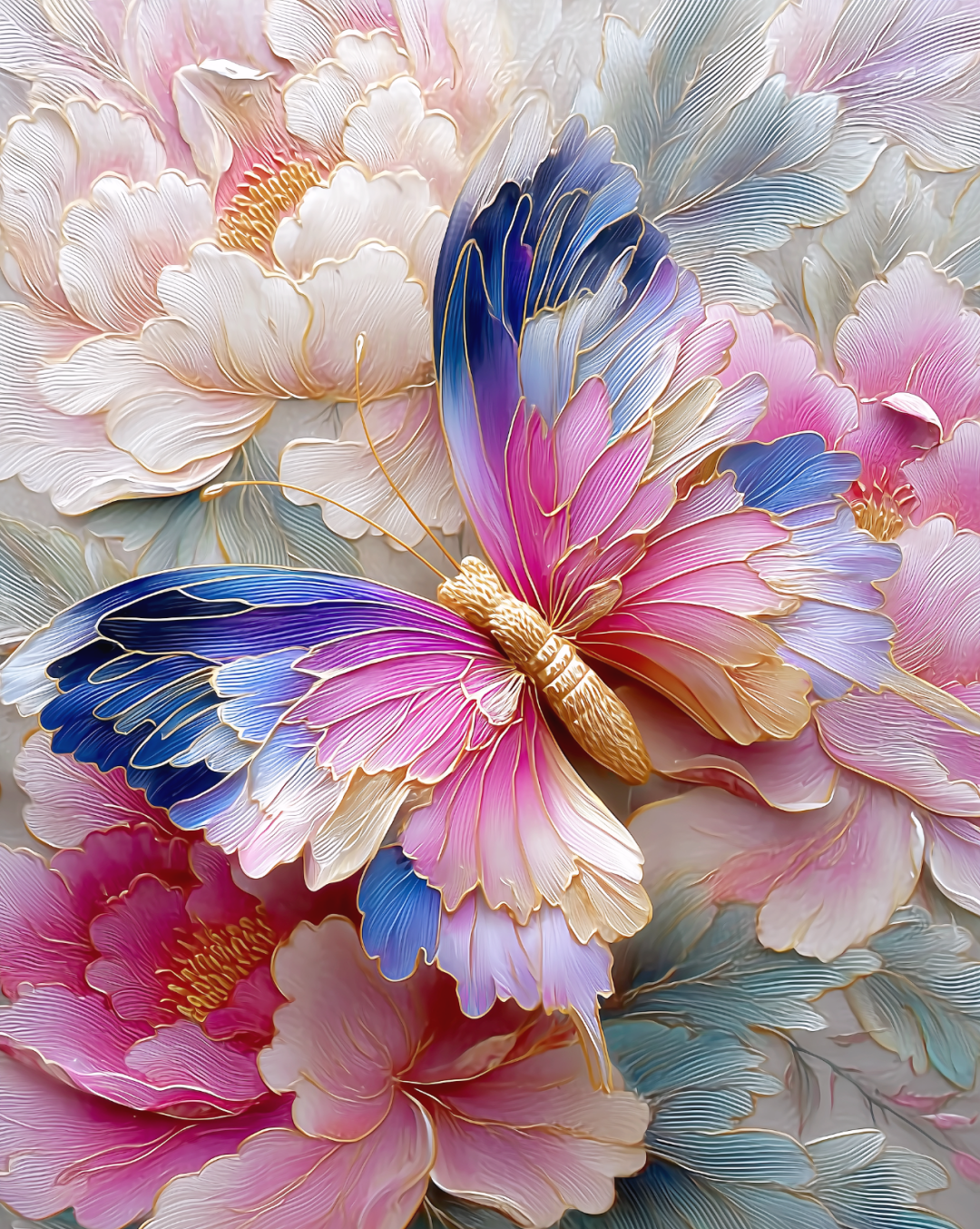
When we immerse ourselves in the "Peony Pavilion" series of illustrations, it feels like we have found a place for our souls to reside. In this fast-paced modern society, people are often troubled by various pressures and troubles, and their hearts long for a peaceful and beautiful pure land. And these illustrations are like a haven, allowing us to temporarily escape the hustle and bustle of the world, immerse ourselves in the poetic world of peonies and flower pavilions, and feel the tranquility and leisure.
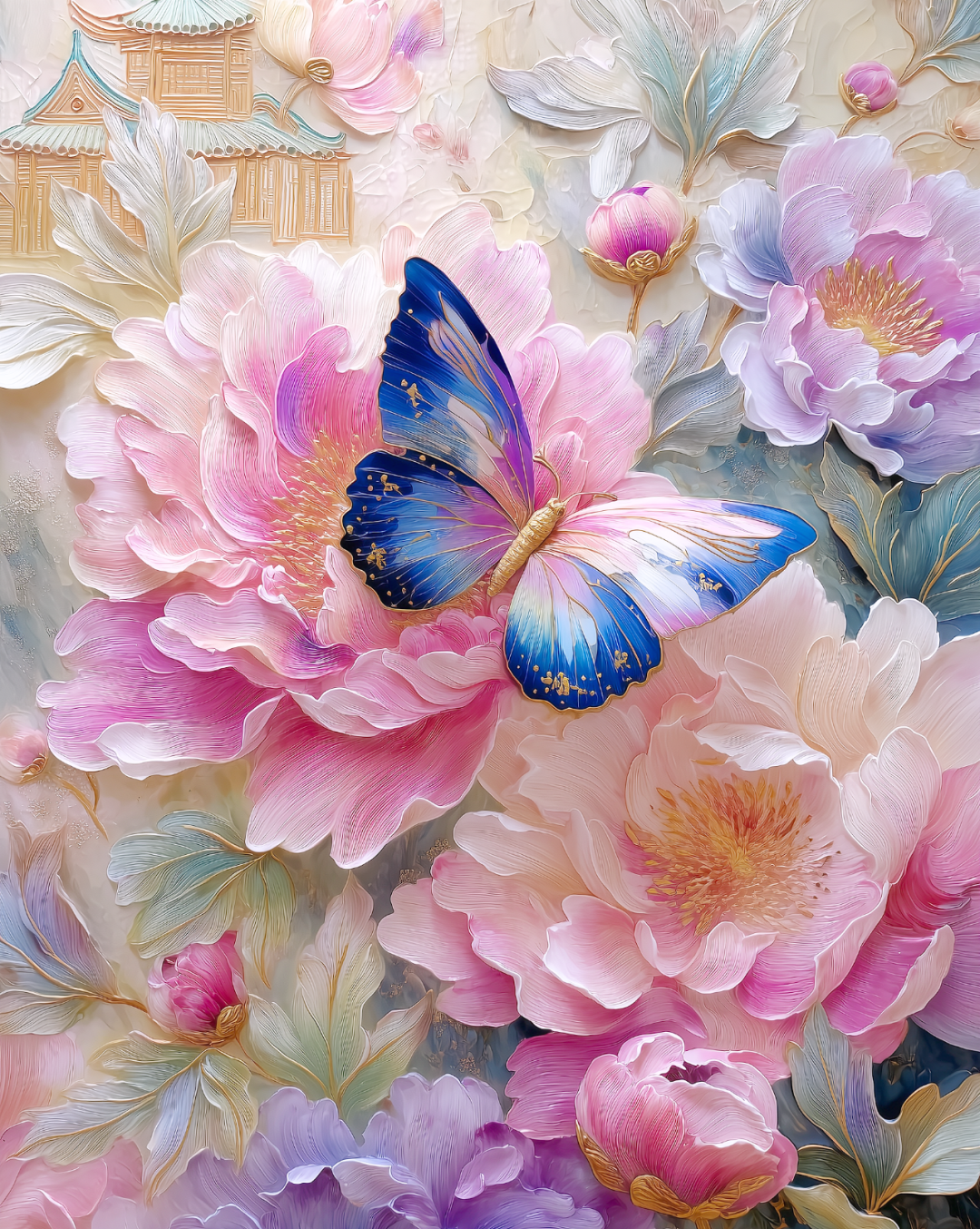
Here, we can converse with ancient people and imagine the scene of them drinking tea and discussing poetry in a flower pavilion; You can embrace nature and appreciate the beauty of peonies and the simplicity of flower pavilions; Can resonate with the emotions deep within oneself, seeking the long lost tranquility and beauty. Every illustration is like a story waiting for us to interpret; Every detail contains the artist's ingenuity, waiting for us to discover.
